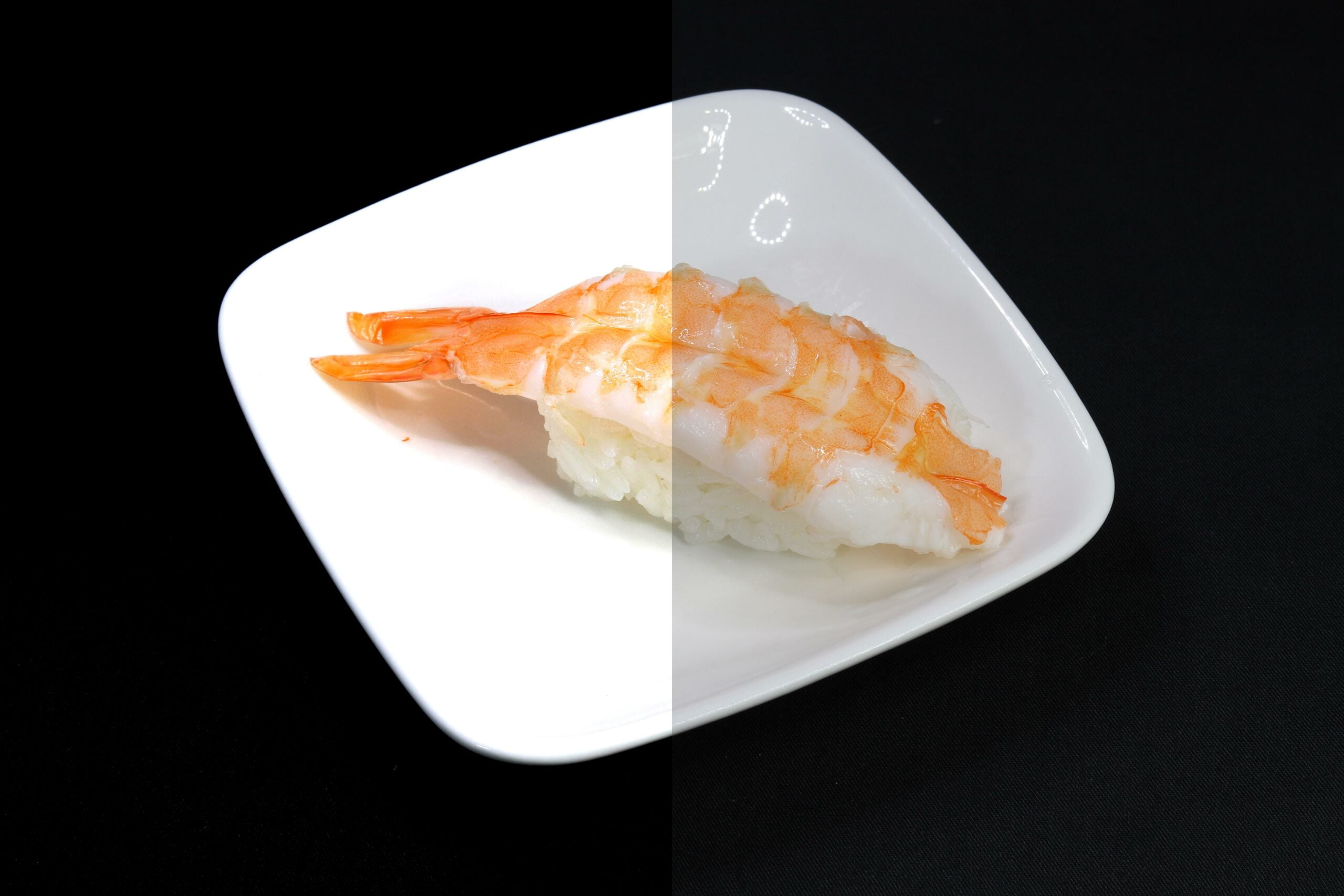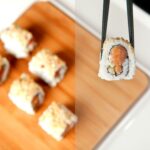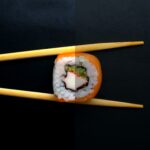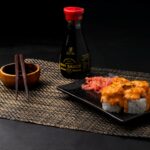Anticipate to be enthralled by the mysteries surrounding susmasterpiece,culinary masterpiece of Japan. This article aims to explore the intriguing realm of sushi rice, revealing noteworthy information that is certain to astound you. In my capacity as a seasoned food writer and sushi aficionado, I have thoroughly delved into the complexities of Japanese gastronomy, with sushi rice perennially serving as the fundamental component of this cherished entrée. Embark with me on an intellectualcrucial as we delve into the historical, cultural, and pivotal functions of sushi rice in the practice of sushi preparation. Anticipate a sensory experience and an enlightening revelation with these fascinating sushi rice facts!
Sushi Rice Facts
In my capacity as a food writer and sushi enthusiast, I have devoted innumerable hours to researching the complex world of sushi rice. There are numerous intriguing anecdotes pertaining to the history, significance, and distinctive attributes of this modest rice preparation, which is vital to the craft of sushi-making. We shall delve into the intricacies of sushi rice and investigate the reasons for its reverence in the culinary heritage of Japan.
1. Sushi rice constitutes its basis.
Before we can fully comprehend sushi, we must recognize that sushi rice consists of additional components. Comprised of cooked short-grain Japanese white (or occasionally brown) rice, vinegar, sugar, and salt, it is a meticulously crafted mixture. As the basis for every variety of sushi, the fragrant, sticky rice produced by the resulting mixture is utilized. This particular amalgamation is the source of the distinctive flavor and consistency of sushi.
“Sushi rice is the canvas upon which the flavors and ingredients of sushi come to life.”
2. The Importance of the Stickiness of Sushi Rice
Stickiness is one of the defining characteristics of sushi rice. Sushi-making is highly dependent on this viscosity, which enables the rice to retain its form when rolled or fashioned into nigiri sushi. Sushi maintains its integrity with each bite due to its viscosity, resulting in a cohesive and gratifying dining experience. This attribute distinguishes sushi rice from other varieties and is an indispensable component in attaining an impeccable sushi roll.
“The stickiness of sushi rice acts as the glue that brings each component of sushi together, creating harmony in every bite.”
3. Sushi Rice Cultivation: An Acorn of Japanese Agriculture
Sushi rice is a direct product of the time period during which rice cultivation was an integral element of Japanese agriculture. Because of its characteristic stickiness, Japanese rice is the ideal foundation for sushi. To achieve rice grains of the utmost quality, meticulous cultivation is necessary, which includes the use of particular soil conditions and irrigation techniques. It is possible to discern this Japanese cultural value of quality and meticulousness in each individual particle of sushi rice.
“Just as a skilled farmer nurtures the rice paddies, sushi chefs meticulously handle and prepare sushi rice to create edible works of art.”
4. Diversity of Sushi Rice: White versus Brown
In regards to sushi rice, brown rice and white rice are both viable options. White sushi rice is the most frequently utilized variety when preparing sushi. Its light, airy consistency and refined flavor make it an excellent complement to a variety of ingredients. Brown sushi rice, conversely, provides supplementary health advantages on account of its elevated fiber content. Brown sushi rice has a slightly earthy and nutty flavor, accompanied by a slightly chewier consistency. Either the traditional white sushi rice or brown sushi rice, which is higher in nutritional value, can be utilized to prepare an exquisite sushi experience.
“The choice between white and brown sushi rice allows for personal preference while still honoring the rich traditions of sushi making.”
5. The Craft of Seasoning Sushi Rice
Sushi rice seasoning is a crucial component in achieving the ideal harmony of flavors. To season the rice, sushi vinegar, which is a mixture of rice vinegar, sugar, and salt, is utilized. Combined with the sweetness of sugar and a trace of salt, the tanginess of the vinegar accentuates the flavor of sushi rice. By means of this rigorous seasoning procedure, each particle of rice is imbued with an exquisite amalgamation of flavors that harmonize with the diverse components employed in sushi.
“Just as a skilled painter adds brush strokes to a canvas, sushi chefs carefully season each grain of rice to elevate the taste and overall experience of sushi.”
By sharing these sushi rice facts, we have revealed the intricacies that comprise this culinary marvel from Japan. Gaining knowledge regarding the cultural significance, seasoning methods, and viscosity of sushi rice enables one to develop an appreciation for the artistry and skill that go into producing each sushi roll. Sushi rice, whether one opts for the traditional white variety or the health benefits associated with brown rice, functions as the fundamental material that manifests the diverse flavors of sushi. So, the next time you indulge in a sushi roll, bear in mind the intriguing details regarding sushi rice that contribute to the exceptional quality of this cherished dish.
Sushi Rice Comparison
| Sushi Rice Varieties | Characteristics |
|---|---|
| White Sushi Rice | – Refined taste |
| – Light and fluffy texture | |
| Brown Sushi Rice | – Higher fiber content |
| – Slightly nutty and earthy flavor | |
| – Slightly chewier texture |
Did you know that sushi rice is not your average everyday rice? It is the foundation of every delicious sushi roll you have ever enjoyed! Explore the fascinating world of sushi rice and uncover the secrets behind its perfect texture and flavor. Discover the art of cooking sushi rice and learn the importance of washing the grains thoroughly. Dive into the cultural significance of sushi rice in Japanese cuisine and its role in creating mouthwatering sushi masterpieces. Click here to unravel the intriguing facts about sushi rice: facts about sushi rice.
FAQ
Inquiry 1: What constitutes sushi rice?
Answer 1: Sushi rice is prepared by combining sugar, salt, and vinegar with cooked, short-grain Japanese white rice (or brown rice, on occasion). The distinctive flavor and viscosity of sushi rice are a result of the combination of these components.
The second inquiry is about how sushi rice is made.
Answer 2: Traditionally, sushi rice is prepared by softening and making glutinous, short-grain Japanese white rice. Subsequently, a rice vinegar, sugar, and salt mixture is introduced into the cooked rice and delicately incorporated. After the rice has settled, it is utilized in the preparation of sushi.
Question 3: What distinguishes brown sushi rice from white sushi rice?
Answer 3: The nutritional composition of the two types of sushi rice is the primary distinction between the two. Brown sushi rice is a healthier alternative to white sushi rice due to its higher fiber content. Nevertheless, traditional sushi recipes predominantly call for white sushi rice.
Question 4: What is the function of sushi rice in the preparation of sushi?
Answer 4: Sushi rice contributes both texture and flavor to the cuisine, making it an essential ingredient in its preparation. The amalgamation of rice vinegar, sugar, and sodium within sushi rice serves to augment the overall flavor profile, concurrently facilitating the adhesion of the sushi components.
Can sushi grains be utilized for objectives other than the preparation of sushi?
Answer 5: Although sushi rice is predominantly employed in the preparation of nigiri sushi and sushi rolls, it does possess alternative applications. As a side dish, sushi rice can be sampled alone, or it can be incorporated into platters and salads. The adaptability of sushi rice permits the preparation of a wide range of dishes in addition to those called sushi.
- China II Review: Delicious Food & Speedy Service - April 17, 2025
- Understand Virginia’s Flag: History & Debate - April 17, 2025
- Explore Long Island’s Map: Unique Regions & Insights - April 17, 2025
















